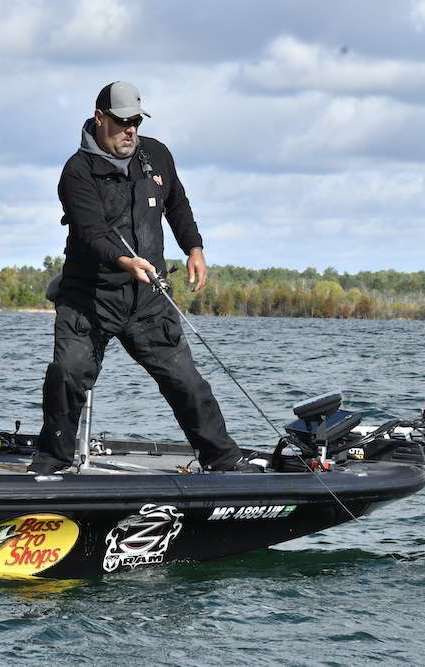
Sometimes people ask me what exactly it is I like about covering bass tournaments. It’s a question that, at times, catches me off guard, because I start to ask myself, “Yeah, what is it again you like about covering bass tournaments?”
The Elites Series season opener on Cherokee Lake was a stark reminder of why I love covering bass tournaments. Because after 15 years of doing this, just when I think I’ve seen every technique and every pattern and every scenario there is in the realm of bass fishing – BOOM – something like Cherokee comes along and blows my mind.
The way that whole tournament unfolded stills puzzles me to some degree. I don’t think I’ve ever covered such a unique tournament in my history on the Bassmaster Elite Series. A week later I’m still stunned as to how those fish were caught.
What amazes me is how dominant that “Damiki rig” actually was. As a side note here, there is nothing new about that technique. It’s a good old-fashioned jig and minnow that has been around longer than I have been on earth. There are 1,000 anglers a day that use that exact same technique in the Detroit River – the only difference is they use it to catch walleye, not smallmouth.
Aside from a few guys who ran way up the lake for largemouth, if you weren’t doing that jig and minnow program down the lake on Cherokee, you basically got crushed. I think the only exception was Skylar Hamilton, who fished vertically with a blade bait to finish 22nd.
Simply put, that was one of the most window specific tournaments I’ve ever covered.
I’m going to go out on a limb here and say that you will never see that jig and minnow technique ever dominate like that other than on those Tennessee Lakes in the middle of winter. It’s so regional specific and so seasonal specific that unless B.A.S.S. goes back to that same area during that same small winter window, it will not be seen again.
I can only venture guesses as to why that technique – and only that technique – was so dominant for smallmouth. For one, as I said, it was region and season specific. Two, it was obviously forage specific – those smallmouth were only interested in 3-inch shad – period. Three, those reservoir smallmouth are just a different breed of smallmouth than northern smallmouth that live in natural lakes, which is probably related to the shad base forage in those southern reservoirs. And finally, those smallmouth are fished for constantly – they are some very educated fish. The presentation had to be precise or you weren’t getting a bite.
But that tournament has left me with more questions than it answered.
One thing I’m still totally perplexed by is how none of the high-caliber drop shotters on the Elites could get those fish to eat a drop shot. I’m still stunned by that.
Also, were there no other options on that lower end? I mean, in all of the hundreds of different lures and soft-plastic body styles on the market today, there was not another one that would work?
And here is where things get personal. I have fished for smallmouth up here in Michigan in water temperatures of 35 to 45 degrees my whole life, and I have never been able to get them to eat a jig and minnow, yet they scarfed it up like candy in Tennessee – what’s up with that?
Finally, I would like to ask you guys out there who are bona fide B.A.S.S. tournament history buffs if you can recall any national B.A.S.S. events that were dominated by a single specialty technique like that? Now I’m not talking about events on the Great Lakes or in the Northeast that are dominated by smallmouth on drop shots. And I really don’t want to include any sight fishing events, which are technique specific as well. I’m talking more about quirky regional or seasonal techniques that might have dominated an event like what happened at Cherokee. Maybe there was a jigging spoon dominated tournament or a Snagless Sally specific event that was before my time. But if you think you know of one, fire away in the comment section below, I’d like to know if anything comparable to that Cherokee event has ever happened before.

